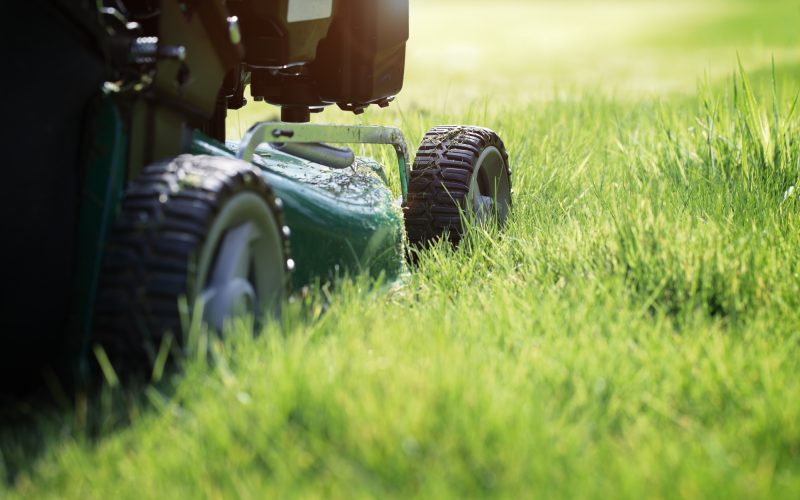For many around the world, spring is in full swing. With the season comes, wonderful weather, clear skies, and bustling plant growth.
Speaking of growth, perhaps the most important thing growing come spring for home owner’s and renters alike is their lawn.
A beautiful lawn can afford owners a bevy of wonderful benefits. A great lawn ties a home’s curb appeal together which can substantially increase a home’s sellability. It can also mean a yard that’s free of annoying bugs, pests and represents a reduced fire hazard going into summer.
To help lawn owners get the most out of their grass in the tail end of spring, below are some helpful spring lawn care tips and tricks!
1) Know What Type of Grass is Being Dealt With
When managing one’s lawn, it’s important to take into consideration the kind of grass that’s growing. Different types of grasses have prime growth months during different times of the year.
For instance, Blue Grass, Rye, and Fescues are all cool-season grasses. These are grass types that will thrive during spring to an extent but mostly flourish during the months of fall.
Alternatively, there are grasses like Centipede, Bermuda, and Zoysia which will have their growth spurts from late spring through to late summer.
Knowing one’s lawn type will keep them from spending too much time doing yard work during a lawn’s down periods. It will also help owners maximize their maintenance schedule when it matters most!
2) Clean Once Dry
If residing in a climate that experiences snowfall filled winters, it’s important to be gentle with a lawn until the soil has fully dried and recovered. Aggressively prepping a lawn for spring too early could work to compact wet soil or damage budding grass shoots.
This could mean setting a lawn up for a lackluster spring/summer.
Once a lawn has shed its winter wetness, lawn owners can proceed to clean it up by doing mild raking, getting rid of leaves and loose debris. This will help spur growth and reduce infestations of pests and diseases.
If snowfall occurs unexpectedly post cleaning a lawn, it’s important to spread snow piles out when possible to encourage rapid melting.
3) Tackle Weeds Before they Tackle You
Spring lawn care is an optimal time to address weeds before they run rampant during the summer. Once winter has blown through and the ground dries up, lawn owners should be proactive and begin applying a preventive weed solution.
This should have a deep impact on the emergence of crabgrass and weeds when the weather becomes consistently warmer.
All grass types can benefit from weed prevention during the springtime. After the initial application, plan on applying a second round of weed solution during the summer as most are only effective for 2-3 months.
4) Planting New Grass
The natural growth spring brings to plant life makes dropping new grass seeds during the season an excellent idea. It’s important to know though that most seeds will not take if put down within 2 months of a weed prevention solution.
That means lawn owners need to pick their priority. Filling bare grass spots or preventing weeds.
If focusing on growth, your seeding strategy should be directly tied to your grass type.
For cool season grasses, temperatures should optimally be between 50 – 60 degrees consistently in order to achieve optimal growth.
For warm season grasses, look to start planting when temperatures are between 60 – 70 degrees.
5) Help Your Grass Grow with Fertilization
Spring lawn care tips rely on spring’s natural ability to make things grow. Still, even during spring, lawns can always use help coming into their fullest forms.
Applying fertilizer to grass can help new seedlings grow and existing grass flourish.
If fertilizing cool season grass, it’s best to only lightly fertilize during the spring. This is due to the fact that fertilizer can exacerbate issues cool season grasses will experience when dealing with summer heat.
The best time to fertilize cool season grasses is during the months of fall.
If fertilizing warm season grasses, lawn owners are afforded much more flexibility during the spring. To maximize lawn growth, look to fertilize in late spring when frost and snow are gone for the season.
6) Know When to Aerate
Spring is a great time to work with lawns and many lawn aerator owners will look to work aerating into their spring lawn care routine consequently. It’s important to note however that aeration is best done during peak growing periods.
For cool weather grasses, this peak period is during the fall. For warm weather grass, it’s mid-summer.
Because of that, lawn owners may benefit from waiting until after spring to oxygenate their grass.
7) Water Regularly
If grass is in its growing period, owners will want to make sure that their grass is getting at least getting 1 inch of water per week. Falling below this or too far above may mean grass that’s going to have stunted growing abilities through their peak season.
Wrapping Up Spring Lawn Care Tips
Spring is a beautiful season that says goodbye to the low temperatures of winter and ushers in a period of wonderful growth. To make sure lawns benefit from all of the seasonal advantages spring brings with it, it’s important to take into consideration the spring lawn care tips above.
Identify the individual grass type in question and apply lawn care tips accordingly.
With diligence up front, lawn owners can ensure an excellent growing, bug and pest free front and backyard that’s perfect for children to play in and great for hosting events through summer.
Want to know more about home tips, life hacks and everything in between? If so, treat yourself to more of the expertly created content on Paldrop.com today!
